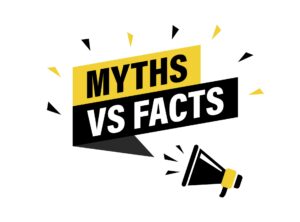1. Stretch Before Your Workout.
Stretching has often been prescribed to reduce injury, increase range of motion and relieve tight muscles. However holding static stretches for long periods of time before you exercise can actually hinder athletic performance, may increase risk of injury during your session and it is never a good idea to stretch cold muscles. Save the static stretching for after your sweat sesh. Just make sure you include a dynamic warm-up at the beginning of your workout instead – this is a sequential series of mobility drills and movement prep exercises to maximize available flexibility of the entire body and prepare the body for physical activity.
2. Lifting Weights Will Make you Bulky.
As trainers we hear this one all the time! Weightlifting on its own does not lead to a bodybuilder type physique. Particularly for women, female hormones make it very difficult to gain excess amounts of muscle mass. Lifting actually offers several health benefits for your heart, joints and ligaments, posture and balance. Not to mention a faster metabolism! It also helps increase strength and energy. In order to get “bulky” there needs to be a calorie surplus and a focus on specific dietary changes.
3. You Need to be Sore After Every Workout.
While being sore is a sign of hard work it’s not the one and only marker you should be using to identify if you worked hard enough. Delayed on set muscles soreness (DOMS) is a results from micro muscle tears that happen after lifting weights or a strenuous new movement pattern. This is completely normal and with proper recovery the body will heal these smalls tears making your muscles stronger as a result. DOMS usually comes on 24-48 hours after a hard workout. Think of muscle soreness as a sign from your body saying it needs to recover first before the next session. And no, it’s entirely possible to still see results without getting sore after every session. If you constantly leave your body a wreck and without recovery it is a sure way to become fatigued, over trained and worse, injured.
4. You Can Target Certain Areas
Big no no! Example: If loosing belly fat is your goal then if you did a whole bunch of sit-ups, crunches and other abdominal exercises then the belly fat would surely just melt off that area correct? Wrong! This is a very common myth probably popularized by fitness marketing and ads selling programs that claim to help you drop belly fat and get a six pack in 10 days! And other sensationalized false claims like that! Unfortunately this is not the way the body works. A much better way to go about this is to do full body workouts or hit large muscles groups multiple times a week and follow a sound diet. Ask a trainer if you’re unsure.
5. Cut all Carbs to Get Lean
Several health trends have claimed that cutting all carbs is sure way to lose weight fast. This might be true in the short run but it is not sustainable or conducive to regular life and will often lead to binging later on. At the beginning when the average person cuts all carbs from their diet they might see a drop in weight but it is mostly water weight. This is because for every one gram of carbohydrate stored in the body (as glycogen) there is approximately 2-3 grams of water retained a long with it. Carbs are the body’s preferred source of fuel and provide energy. However not all carbs are created equal. According to the experts at Precision Nutrition the carbs in your diet should be complex carbs such as veggies, fruits, whole grains and beans. Avoid or limiting simple sugars and refined carbohydrates like pasta, processed foods, baked goods, etc. all of these lead to a big spike in blood sugar and insulin. When there is a lot of excess insulin and sugar in our blood stream, it signals our body to put that excess sugar in storage. First the body stores these sugars in the liver and muscles, when these get full but body will store the extra sugar as fat.
6. Detoxes, Cleanses and Fad Diets!
A good rule to live by is to steer clear of any fad diet that seems too good to be true. Fad diets, cleanses and supplements claiming fat loss can be dangerous and filled with unregulated ingredients and can sometimes even cause damage to ones metabolism.
7. Your Muscles Will Turn to Fat if you Stop Exercising.
Muscles tissue and fat tissue are completely different things and cannot turn into one another. However, under-utilized muscle will lose mass and strength over time. Any fat gain will be probably from eating the same amount or more than you were eating when exercising regularly. Good reason to keep up the fitness consistency!
Rosalie Walsh


